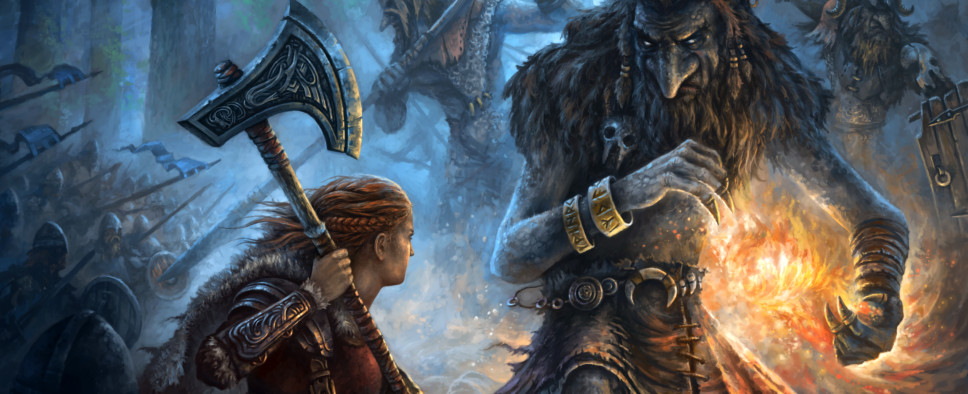Runemaster Developer Diaries, Continued
-
Category: News ArchiveHits: 1059

The team at Paradox Development Studio continues to crank out more developer diaries for their mythology-based RPG Runemaster, with the latest set including Diary #16: Basic Combat, Diary #17: Upgradeable Units and Abilities, Diary #18: Midgard, and Diary #19: Human Race. An excerpt on progression:
All of the units in your army have a level, from one to eight. Most units are recruited at level one and will then gain experience from taking actions in combat. When enough experience has been accumulated, it gains a level and will be ready for upgrading. The unit can then be taken to a "training ground" location where you pay gold to upgrade the unit to the next level. For each level gained, the unit will gain some basic stats depending on the unit and you get to choose between two different bonuses. These bonuses can either be an additional stat increase, a new ability, an upgrade to an existing ability or an increase of sub-unit count.
This gives you the opportunity to tailor your units to match your play style, while still keeping the micromanagement under control. If you never replace units and get 15 units up to level eight you'll have made 105 upgrade choices which is a lot, but still manageable over the course of a long game.
Pay the Cost to be the Boss
Since you have to pay gold to upgrade your units and you also pay gold to recruit new units, a lot of your early game economy will revolve around deciding if you want fewer elite units or more, less effective troops. High level units also cost more to get back in the field if they're wounded or decimated, so it's important to plan ahead and think about how you will use your gold to get the most out of your army. Getting the extra bonuses from higher level units is supposed to make a real difference, and experienced units can do wonders in some situations. But you also don't want to be so outnumbered on a battlefield that your best warriors go down before they can do any real damage.
If you pay attention to how the battles are shaping up and changing as you move through the game, your army will go through a range of compositions. A fair sized army of scrubs may work in some situations, a crack troop of elite soldiers in another and later you may find that you need some cannon fodder to give you time to put your hero and best soldiers into position.
Abilities
All units in the game start with either an active or passive ability. Active abilities include stuff like calling down a fireball upon your foes or making a cavalry charge to target the enemy's ranged units. Examples of passive abilities are inflicting bonus damage from flanking attacks, defensive bonuses to neighboring friendly units and damage each turn to neighboring enemy units.
Most units can also gain one or two abilities from upgrades which will further specialize that unit to serve a special purpose. Perhaps your archers gain the ability to fire flaming arrows or your armored units can form a shield wall. Other upgrades will improve a unit's base ability or reduce the focus cost for using it, so that you can use it more often.
Sub-unit count
Units start with a set number of sub-units - a Shieldmaiden unit may be composed of three Shieldmaidens, for example. Each sub-unit is displayed on the battlefield with a 3D-model. Some of the stats of a unit are multiplied by the number of sub-units; losses will make a unit weaker, in other words. Sub-units that fall in battle need to be "revived" or replaced at a cost if you want to get the unit back to full strength.
Units of different races start out with a different number of sub-units. It takes fewer Giants to make a battle worthy unit than it does Dwarfs, for example. Choosing between adding sub-units to a unit or buying something else as an upgrade is another important spending decision - a small elite unit with a special ability or a stronger basic unit. Some stat upgrades will add an extra sub-unit to a unit.

